


The largest planned combined axis amphibious operation of WW2
Strategic situation in the Mediterranean
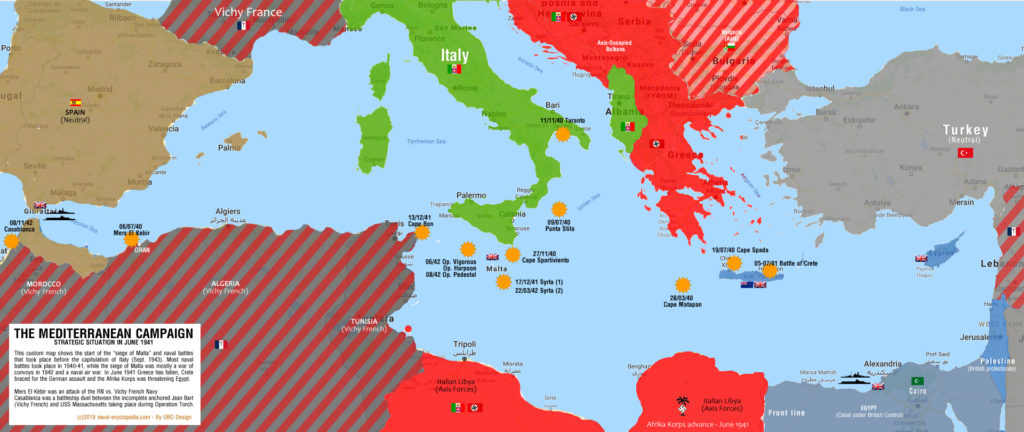
Strategic situation of Malta in June 1941. This map was tailor-made for Naval Encyclopedia, showing the extent of the naval air war in the Mediterranean and geopolitical situation. From November 1942 the map changes dramatically: Mainland Vichy France is totally occupied, and Vichy overseas territories are seized by the Allies while the Afrika Korps is pushed back from Egypt and is retreating through Libya. The Malta siege is about to end since North Africa is compromised, and the operation is cancelled.
Malta, was after Crete, Cyprus, Alexandria, and Gibraltar, was one of these strategic allied strongholds and “unsinkable battleships” controlling the Mediterranean.
Crete was the last refuge for the British army sent as a reinforcement of the Greeks after April 1941, and eventually the Island was taken by German paratroopers after much losses of lives and the failure to capture the British Army, evacuated by sea like a “second Dunkirk”.
Cyprus during WW2 was another British enclave (still today the second largest population after the Greeks is British). In 1925 Cyprus indeed was declared a British crown colony. Many Greek and Turkish Cypriots fought in the British Army during the Second World War, and many enlisted in the Cyprus Regiment. Cyprus was at the gates of both Egypt, the Middle East and Turkey. Egypt was controlled by UK, Turkey was staunchly neutral and the levant (Palestine, Syria) controlled either by the British or Vichy France.
Yet Cyprus remained unmolested: The island was indeed beyond the range of German fighter cover and sending unescorted transport planes or freighters in the area would have made them easy prey for the Royal Navy and RAF, and a far more dangerous gamble to be realistic, even so with little strategic gains in the end. More was hoped that through the grinding advance of Rommel on Egypt (victory was still a possibility at that point) and of the Group army south towards the black sea, and possibly afterwards, Iran and Iraq would be reached and both force would liaise.
Egypt, indeed controlled the vital Suez canal, the eastern gate of the Mediterranean, and apart Italian frogmen that made it into the harbor and sank two battleships, there was no serious amphibious or combined operation intended to take the canal, other than Rommel’s Afrika Korps on land.
Gibraltar, which closed the western gate of the Mediterranean could have been taken with relative ease by a combined German-Spanish attack. However Hitler failed to draw Franco into any plan of invasion and dropped the matter. The Italians however, through their Flottiglia X, sank several ships into the severely guarded harbor, using Maiales and the tanker Olterra as a secret base.
Early plans for taking Malta
Operation Pedestal and allied convoys for Malta – map by Gordon Smith, www.naval-history.net
Malta was a tempting strategic target: The Island controlled the southern path of the traditional “hinge of the Mediterranean”, Sicily. It was placed as a “pebble in the Italian boot”. Just between North Africa and Italy, menacing any axis convoy passing by. It was relatively easy to take since from Sicily and Southern air bases, both the Luftwaffe and Regia aeronautica covered the area. For the Afrika-Korps and the axis at large advancing towards Egypt in the fall of 1941, taking Malta was a logical, strategic step.
The “siege of Malta” (1940-42)
The whole campaign called “the siege of Malta” showed the dire situation the British were in this isolated stronghold. Right into the path of Axis advance, the island was far away from both Gibraltar and Alexandria. Reinforcements had a perilous and long way to go before reaching the island, under the constant threat of the Regia Marina and Axis aviation.
Malta was a British colony. Loosing it was, even outside the context of war, not a question. During the war, of course, it became an essential stronghold and was reinforced many times, starting in 1939-40, before the Italians even declared war to France in June 1940.
The “siege” lasted from 11 June 1940 to 20 November 1942, when the Afrika Korps was driven out of the area, and the Regia Marina has suffered severe blows. This represented a total of 2 years, 5 months, 1 week and 2 days of nearly constant fighting, with the British army, RAF and Royal Navy moblized, and the local population suffering a “blitz” sometimes to the level of what London endured. The operation to take Malta, Herkules (Germans) or C3 (Italians), was to combine a preparatory airborne assault with about 30,000 axis paratroopers and an Italian-led amphibious assault with about 70,000 troops, including 2,000 Marines.
British presence on Malta
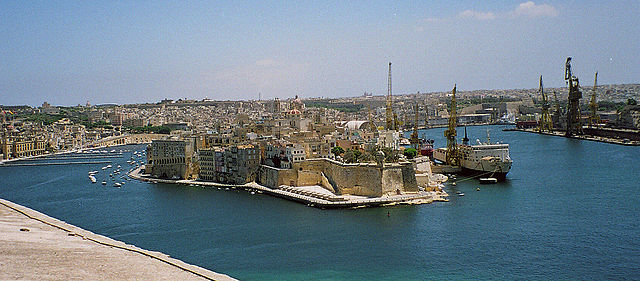
Knowing the presence of Fascist Italy in the region, the British already had moved the Royal Navy HQ (Mediterranean Fleet) in Valletta (Malta) to Alexandria in October 1939. Worst still for Malta, the Mediterranean Fleet was also transferred to Egypt at the same time. Given the turn of the battle of north Africa after the arrival of Rommel, and the axis advance, Malta became more and more isolated. Malta was anything but a small rock, 27 km × 14 km (17 mi × 9 mi) and about 250 km2 (97 sq mi) with a population of around 250,000 in June 1940, and about 4% native Maltese (roughly 10,000). British Military personal and their families made the bulk of the residents. The population mostly lived concentrated in Valetta, Grand Harbour. The paradox was the island was ill-defended as pre-war reports concluded the island was indefensible.
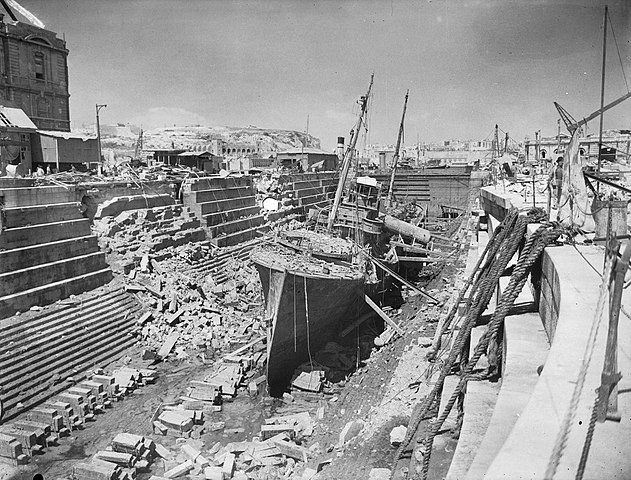
The armed trawler HMS Coral within a bomb-damaged in La Valette’s Dry Dock No 3 during World War II
The city was named after Jean parisot de Valette, a post-crusades era Knight, Grand Master of the Order of Saint John (Hospitalers). The city was already besieged by the Ottomans. After successfully resisted them at Rhodes, he became the hero of the siege of Malta in 1565, regarded by some authors as one of the greatest sieges of all time.
The bulk of the Royal Navy installations were concentrated in just 1.3 km2 (0.50 sq mi) in the Three Cities district, with the dockyards and the Admiralty headquarters, housing about 28,000 and perhaps one of the most bombed spot in history (but Monte Cassino perhaps). In April 1942 the Admiral Superintendent of Malta Dockyard reported that on the naval base “practically no workshops were in action other than those underground; all docks were damaged; electric power, light and telephones were largely out of action.” This was all due to Luftwaffe and Regia Aeronautica raids.
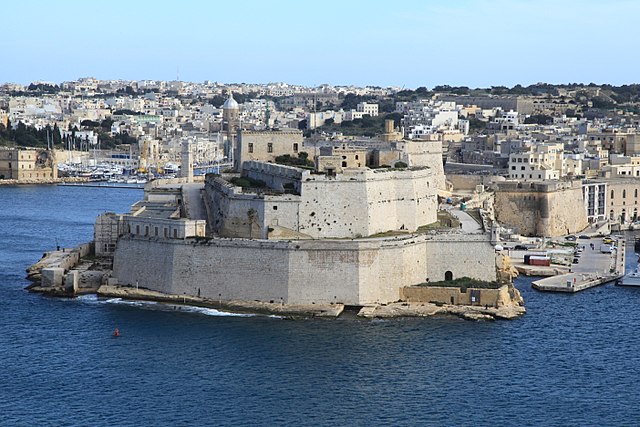
Malta’s fortifications dating back from the crusades: Fort St. Angelo as seen from the Upper Barrakka Gardens, naval HQ, Admiral Sir Andrew Cunningham, from 1939 to March 1942. His alternative HQ was HMS warspite. St Angelo defenses consisted in 3 Bofors guns (manned by the Royal Marines and later by the Royal Malta Artillery) and the fort withstood 69 direct hits between 1940 and 1943.
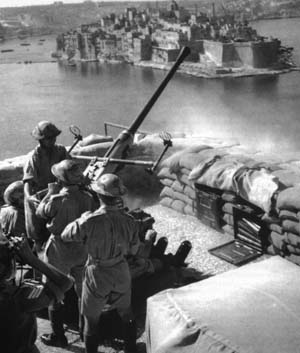
Royal Army:
At some point during the north African campaign, troops of all the commonwealth transited or stationed in Malta: From Southern Rhodesia, Australia, Canada, New Zealand and South Africa.
There were an armored component as well, limited to Vickers tankettes of the Bren Carrier type, light tanks Mark VIc, and a few Matilda II Tanks.
 , Cruiser Mk.I and Mk.IVs, and Valentines.
, Cruiser Mk.I and Mk.IVs, and Valentines.
Matilda II tank Griffin at Malta (src: tanks encyclopedia)
Royal Air Force:

Gloster Sea Gladiator “Faith” one of the only three ones that defended the island of Malta in 1940 (Hal Far Fighter Flight). The only one surviving the fight, offered later to the people of Malta and now on display in the national museum
369 fighters were engaged during the siege, from the fleet air arm alone. At its peak, Malta’s own RAF force, land-based was 64 fighters, mostly of the Hurricane type. Air Headquarters Malta was established on 28 December 1941, the forerly “RAF Mediterranean command” under Air Vice Marshal Hugh Lloyd. In 1940 however, Malta had only three fighters at its disposal, which were all destroyed but acquired by their numerous kills an almost legendary status: They were nicknamed “Faith, Hope, and Charity”, Sea Gladiators of the Hal Far Fighter Flight. In 1942 Malta was ungdergoing the worst mayhem: On 20 April 1942 US Aircraft carrier USS Wasp delivered 47 Spitfires to Malta, of which 30 were immediately destroyed by the Luftwaffe. However situation gradually improved. On July 1942, AHQ Malta had 200 aircraft, almost half of which were Spitfires. There were three airbases, RAF Hal Far, RAF Luqa, and RAF Ta’ Kali. These forces were renforced by bombers and took an active part in the destruction of axis convoys. Together with an American bomb group, the N°205, Maltese RAF was credited of sinking 59% of the German tonnage and 45% of the Italian tonnage.
Royal Navy:

The monitor HMS Raglan leaving Malta to shell Brindisi
At the head of the Mediterranean Fleet was Admiral Andrew Cunningham, and the bulk of it was based at first in Gibraltar, as Force H (Vice-Admiral James Somerville). Alexandria was the second largest naval base for obvious reasons (and main Med naval HQ from October 1939), but Malta was just a stopover with rarely more than a few submarines and destroyers. Its main advantage was an intermediate position on the way west to east and drydocks for summary repairs. They were large enough for destroyers at the most. The only major “permanent resident” was the monitor HMS Terror, which acted as a guardship, armed with two BL 15 inch Mk I naval guns (356 mm), but she was sunk 24 February 1941 off Derna when committed as a last resource to try to stop the axis advance.
Stationed at some point or transited through Malta waters were a Battleship, 2 aircraft carriers, 4 cruisers, 19 destroyers and 38 submarines. The main interest indeed for submarines was to catch Axis convoys en route to North Africa. However in reality the island situation was so exposed that few significant warships stayed in Malta. They would have been sitting ducks.
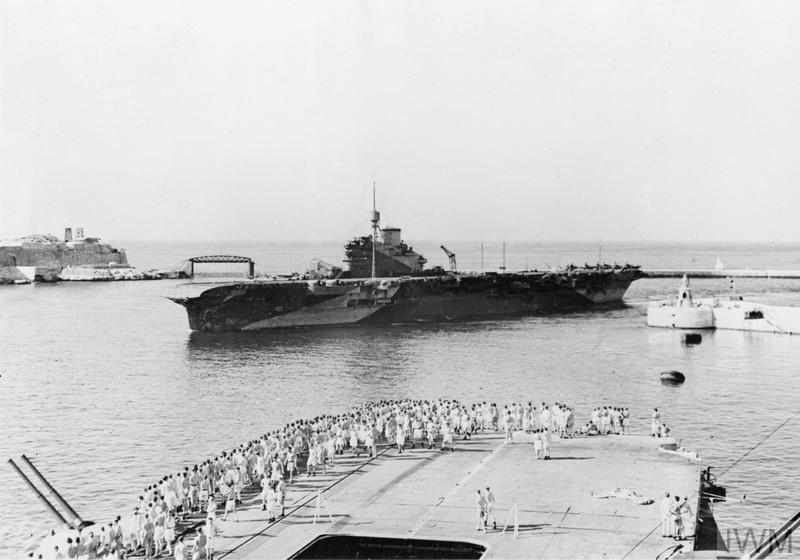
Axis Planning against Malta
Mussolini’s DG10/42 invasion plan
In 1938 Mussolini already made plans for an invasion of Malta (DG10/42). A force of 40,000 men would land and proceed to capture their objectives. For this, 80 purpose-built landing crafts would be made, and a diversionary attack on the shore in the north, and a main assault upon the Victoria Lines, across the island’s center. A secondary landing would take place on Gozo (north-west) and the islet of Comino.
The amphibious assault was to be covered by 500 aircraft. However the lack of supply became a real problem for planners and this operation was suspended (see later). Because of the Afrika Korps successes in May–June 1941, the Italian invasion plan was revised down to 20,000 men but supported by many tanks. Italian intelligence however overestimated Maltese resilience and the situation during the summer 1941 was so dire for Great Britain that the operation was deemed unecessary, since axis forces would likely reached the Cairo and the Suez Canal, leaving Malta isolated even more, far behind. Mussolini, like Hitler also capitalized on the full collaboration of Francoist Spain, helping seizing Gibraltar, effectively closing the Mediterranean, despite Hitler’s meeting with Franco on 23 November 1940 failed to achieve its goals.
Limitating factors
Partial mastery of the seas
Another aspects refraining the Italians to launch the operation was their partial mastery of the seas in this area; The Italian Admiralty at first thought capable of keeping Royal Navy’s battleships bottled up in Alexandria, which only happened after the intervention of frogmen.
Lack of resources
The lack of crude oil was also an issue, a the Germans own supplies for Romania were scarcily released for Italy. There were actually large oilfield in Libya, but Italian geologists failed to localize them. by 1942, the lack of fuel not only hampared any possible amphibious action but even prevent an efficient training in open sea; aLREADY IN THE BEGINNING OF 1941 it was estimated Italian reserves would only last for seven months.
British commitment in the defence of Malta
British confidence in the meantime knew some heights (at Taranto) and some lows when the Luftwaffe began to cripple her fleet in 1941 and 1942 and had a hard time defending Malta.
Cunningham at first probed the defences of the Regia Marina, starting 9 July 1940, in what was called the Battle of Calabria (Or Punta Stilo). It was the first clash between Italian and British and RAN vessels and it ended as a draw, like many other engagements.
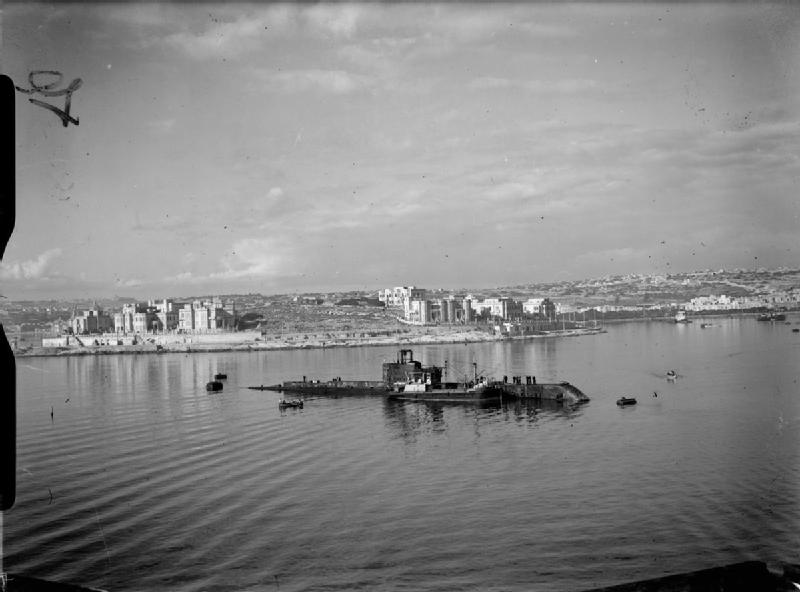
HMS Olympus taking in supplies in Manoel Creek, Grand Harbour, Malta, December 1941
Despite this half-baked result, the Maltese were confirmed the Royal Navy was still here for them even not based in the too vulnerable Grand Harbour. Ten days later, there was another battle of Cape Spada, a relatively small clash off Crete, pitted one British light cruiser and 5 destroyers against 2 Italian light cruisers, and ended with a clearer British victory. In November 1940, this domination was confirmed by the hardy night raid on Taranto 11-12 November, which not only forced the Regia Marina to evacuate the base for another less exposed, and was left with only a fraction of ther fleet operational.
16 days after, this was the battle of cape Spartiviento (27/11), the first naval battle which was directly about the defence of Malta. After a half-failed attempt to resupply the defence of Malta by sending there fleet air arms planes (Operation White), the Royal Navy attempted another supply convoy, this time escorted by the whole force H from Gibraltar. It pitted James Somerville against the bulk of the surviving Regia Marina headed by admiral Inigo Campioni. These were considerable forces: On the British side, a carrier, a battleship, a battlecruiser, a heavy cruiser, 5 light cruisers, one AA cruiser, 14 destroyers and 4 corvettes to escort 4 freighters. The Italians thrown at them 2 battleships (Veneto and Cesare), 6 heavy cruisers and 14 destroyers. But both admirals were in a rather conservative mode (to the point Churchill later wanted Cunningham to resign), and the battle ended, again, as a draw, with a few casualties and only a few ships damaged.
However in March 1941, this time, it was a clear-cut victory at the Battle of Cape Matapan, the Italians loosing three of their Zara class heavy cruisers, while trying to intercept British convoys transporting reinforcements this time to help Greece in the Greco-Italian War. Cunningham saved his head and showed that without efficient air reconnaissance and radar (this mainly a night fight), the Italian fleet was doomed. Afterwards, the Italian admiralty would show only more caution, and this also trigerred the conversion of a liner into an aircraft carrier (Aquila, nearly completed when the Italian surrendered).
On 17 December 1941, the first battle of Sirte happened at sea when Operation Crusader was raging. The attempt to relieve a besieged Tobruk also needed for the axis that supplied reached Tripoli, for which Malta was just on the way. After the loss of two cruisers for fast supply faled at the battle of Cape Bon, the Italians prepared the Axis convoys M41 and M42, the first consisting in eight merchant ships in three groups, protected by the bulk of the Regia Marina.
During this operation, British submarines did wonders: HMS Upright sank two freighters, while two other collided in the confusion and had to return, and later Vittorio Veneto was torpedoed by HMS Urge and has to quit the convoy. M42 was a second attempt with a reduced shipping and escorting force, while the British sent their own convoy to Malta centered around the single fast freighter SS Breconshire. The latter was spotted by axis planes and attacked, revealing her position to the Regia Marina which detached the escort to attack. However the Italians fired for only 15 minutes before disengaging, and only light damage was deplored. The battle was a draw.
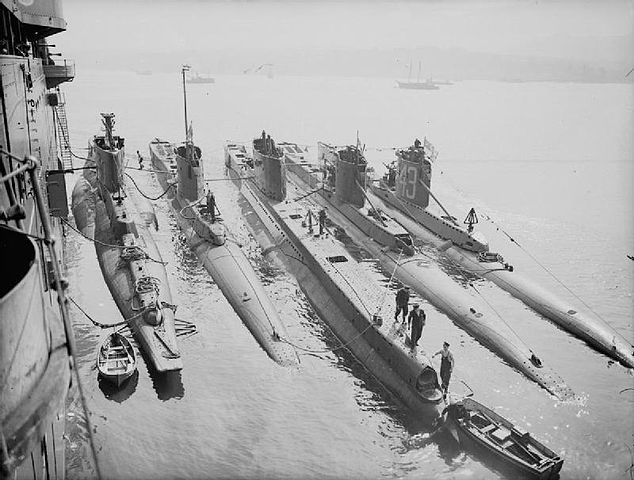
HMS Upright was perhaps one of the most successful British Mediterranean submersibles, very active during the defense of Malta.
The second part of this match occurred in 1942. As Operation DG10/42 became more certain, and despite the lack of commitment of the Regia Marina after Matapan (so the whole of 1941), three hard-fought battles took place as the British desperately tried to reinforce the defences of Malta by convoys in 1942. Three British operations in what both sides called the “corridor of hell”, as contested as was the “slot” at Guadalcanal: Operation Vigorous and Harpoon in June 1942 and Pedestal in August.
These convoys were intercepted both by the Regia Marina but also axis aviation (in particular the Luftwaffe) with different results. The Second Battle of Sirte (March 1942), is for most authors a British victory, frustrating the Regia Marina to intercept a convoy to Malta, but a strategic failure as the cargo ships were exposed to Axis air supremacy and 80% of their supplied were lost before reaching the Island.
Admiral Philip Vian committed considerable forces but no capital ships in the operation nor aircraft carrier, but some 8 light cruisers and 26 destroyers plus many other light ships escorting at some point 11 freighters. Opposing them, Iachino was able to use 2 battleships, 2 heavy cruisers, 2 light cruisers, 12 destroyers, reinforced by the few naval assets the Germans were able to bring in the area, 6 E-boats and 2 U-boats, but the axis had in common about 220 planes.
Operation Vigorous consisted in a large supply convoy operation called MW11 from Gibraltar to Malta 11–16 June 1942, part of Operation Julius, which associated a supporting operations, MW11c departing from Port Said on 11 June as a bait for the Italian fleet. The battle which followed, called by the Italians Battaglia di mezzo giugno, saw the British convoy crossing “Bomb Alley” between Crete and Cyrenaica, constant axis air attacks, E-boats, submarines and the threat from Taranto. Despite the considerable forces and complex plan, Operation Julius was a British defeat. Only two freighters reached Malta.
As the result of the Second Battle of El Alamein, the air garrison of Malta was strongly reinforced, at high cost, but thanks to Ultra, the British were now able to intercept axis convoys with much ease and as the result in total, sank (mostly in the vicinity of Malta) some 3,082 Axis merchantmen. This lack of supplies proved fatal to the Afrika Korps and the axis in Africa at large.
Malta invasion on the German side: Operation Herkules
Unternehmen Herkules consisted as a large reinforcement of the Luftwaffe in Sicily and a bombing campaign against the island. The British saw this as a prelude to invasion, compounded by reports of troop movements in southern Italy. However signals intelligence and air reconnaissance brushed aside this prospect later source of information were kept well protected. Axis preparations were revealed on 7 February through a Luftwaffe Enigma messages decryption, but from 23 March the prospect was once again set aside as the Luftwaffe multipled bombing raids on the unfortunate island.
By 31 March the bombing campaign led to a prediction of an April invasion, agains discounted as the bombing campaign reach a new height, going from 750 long tons (760 t) dropped in February to 2,000 long tons (2,000 t) in March and up to 5,500 long tons (5,600 t) in April. At that point, 425 Luftwaffe aircraft operated daily from Sicily. This was not the 650 originally planned, detained in Russia because of the Soviet winter offensive and the withdrawal of Fliegerkorps.
In May, an entire Luftwaffe bomber group was retired and a fighter group, and Hitler waved about the whole operation, suspicious of the Italian navy willigness to fight in case the Lufwaffe was retired. The capture of Tobruk in June releaved him, as the invasion was now unnecessary and both leaders agreed to pursued the British into Egypt. Operation Herkules was cancelled for good.
Axis Air forces deployed for Esigenza C3
It is seldom known that the Italians had already blooded their nose in an attempt to attack Malta: It took place on 26th July 1941 under Fort Elmo, which guarded the entrance to Grand Harbor, Valletta. It was led by the famous Italian X Flottiglia MAS, but they were soon spotted by radar and repulse by AA batteries and other guns with great losses. It showed that only a cooridnated assault at a large scale with the help of the Germans was necessary.
Axis Air component

A DFS 230 glider
Overall Command of the airborne component was Generalmajor Kurt Student’s at the head of Fliegerkorps XI. Mastermind of the Battle of Crete, he had months to prepare, gaining Knowledge of Malta’s terrain and defenses in great detail. Thanks to a meticulous aerial mapping by the Italians he was able to devise a carefully planned systematic attack of all defenses. Ten Junkers Ju 52 assault groups were setup for the operation, about 500 of them committed to air landings along with 300 DFS 230 gliders plus 200 large Go 242 gliders and 24 Messerschmitt Me 321 Gigant gliders towed by the He 111Z Zwilling. In total, in one swoop, this combined force was able to carry 21,200 paratroopers.
On the Italian side, 180 to 220 three-engined SM.75s, SM.81s and SM.82s were mobilized, able in total to carry in one assault some 6000 men on average, but the short distance from Sicily meant four round-trips per day were possibe. The main assault would take place on the southern side of the island, securing the high ground behind the invasion beaches, capturing an airfield for further reinforcements. Participating were the German Fliegerdivision 7 and Italian 185th Airborne Division Folgore, plus 80th Infantry Division La Spezia airlanding division so in total roughly 29,000. Three glider strips of about 25 mi (40 km) were created south of Mount Etna in preparation.
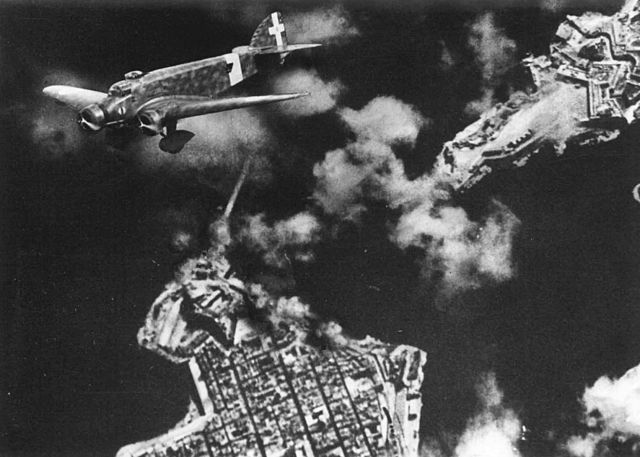
Axis bombing raids never stopped. The Italians in particular, could launch raids after raids from Sicily making Malta’s “blitz” very real.
Axis amphibious assault Component

Detailed map of Operation Herkules/ Esigenza C3. Credits: src: alchetron.com
The axis naval assault force was strong of 70,000 Italian troops. Amphibious landings were planned on the south-eastern coast of Malta, Marsaxlokk bay, in particular on a beaches of Famagosta and Larnaca. For support, the small islands of Gozo and Comino were also to be taken and held. Fake or bait assaults would take place at St. Paul’s Bay, Mellieha Bay, NW of Valletta. This was close to the obvious Victoria Lines, and more obvious as a choice for the British.
Composition of the Italian Infantry
The main assault of Esigenza C3 was to start before midnight after the airborne forces has been dropped in the afternoon to secure the heights above the planned landing beaches. The first-wave were from the Friuli (10,000 men) and Livorno Infantry Divisions (9,850 men), part of the XXX Corps. They were complemented by the 1st Assault and Loreto Battalions (Regia Aeronautica, 1200) two battalions of San Marco Marines (2,000) and three battalions of Blackshirts (1,900). Perhaps the most “salty” of these were the elite 300 Nuotatori, an Italian San Marco marines commando unit trained in ocean swimming and beach assault.
The next wave consisted of the Italian XVI Corps, essentially 9000 men of the Assieta, and Napoli (8,900) Infantry Divisions plus 3,200 men of supporting artillery units plus the second half of the 10th Armoured Regiment. Gozo idland was left to the Superga Infantry Division (9,200) and Blackshirts plus San Marco Marines, the second day.
Armored component
Armoured support consisted only of nineteen Semovente 47/32 and eight Semovente 75/18 and thirty L3 tankettes.
The German part of these landing was to provide the heavy armored component: For Operation Herkules the 2.Kompanie/Panzerabteilung z.b.V.66 (special use) partly equipped with captured Russian tanks was mobilized. It was given ten assorted KV-1 and KV-2s heavy tanks. They were carried by ten modified Italian motozattere (landing craft) with reinforced flooring and internal ramps.
Also modified Beutepanzer T-34(r) medium tanks and light tanks of the VK 1601s/VK 1801s types (6 each), twelve Panzer IVGs. In addition twenty more Panzer III were planned to be used, but with no prevision of origin. This part of the landings were to take place withing two days after the start of the landing operations, after Marsaxlokk Bay as totally secured and used as the main bridgehead. For the armored part of the operation see the excellent article on tanks encyclopedia
Regia Marina and Kriegsmarine landing crafts
The Regia Marina landing crafts until then has been few in numbers, and the Motozaterra were basically copies of the Kriegsmrine’s Marinefährprahm Type A (MFP), of which sixty-five were completed by July 1942, fifty made available for Esigenza C3. They were reinforced by twenty German MFPs which arrived via the river Rhone as a backup. Only 9 Motolance were also part of the operation, the only one ever produced (see later).
Also were sent from Germany by rail twelve Siebel catamaran ferries, six Type 39 and six Type 40 Pionierlandungsboote (see below), eighty-one Sturmboote (basically small plywood boats carrying six, with a 30 hp outboard motor) and large inflatable rafts (capacity: 25 each), partly rowed.
The Forza Navale Speciale (Admiral Vittorio Tur)
The Italians component also comprised larger ships for the later phase of the assault, two Messina railway ferries converted to carry 4-8 tanks) and ten passenger ships (carrying 800–1,400 men), plus six passenger ferries (400), six freighters (3,000 tons) and 30 ex-trawlers which could carry an additional 300 men each. Also the Regia Marina mobilized five minelayers converted to carry 500 men each and 74 motorboats with various capacity, about 30–75 men each, whih of course required quiet weather. 200 additional German Sturmboote were also to be operated by mixed crews to ferry en from ships to shore.
The German Navy also provided for Operation Herkules the Seeschlange (or “Sea Snake”), basically a floating ship-to-shore bridge designed for Operation Sea Lion, formed from a series of joined modules acting as a temporary jetty. The idea was ressucitated by the British for D-Day and the famous “Mulberry“, but with the differences of scale and material. The German “roadway” Seeschlange was loaded with cranes and already tested by the Army Training Unit at Le Havre in 1941. It could be deployed by rail.
Axis Naval forces deployed
The involvement of Axis Naval Forces consisted in:
-9 Motolance ML
-50 Motozaterra ML
-27 Marinenfahrprahm
-10 Siebel Catamaran Barges
-6 Type 39 and 6 Type 40 Pionerlandunsboote (engineers landing crafts)
-281 Sturmboote (81 crewed by germans, the remainder by Italians)
-300 inflatable boats
The J+2 reinforcement wave was to comprise a wide array of assorted ships of the Forza Navale Speciale.
German Marinefahrprahm

Src: weaponsandwarfare
The Marinefährprahm or MFP for “naval ferry barge”, was the largest landing craft used during ww2 by the Kriegsmarine, developed from a pontoon and half rivering barge, and able to use seaways across Europe. Planned at first for Operation Sealion (July 1940) the first prototype was operational on 16 April 1941 and production led to the variants A-D, MZ, AF, AT, KF. Some were used as minelayers, command, support or FLAK ships. Riveted steel, three truck Deutz engines (10.5 knots max empty, 1340nm.
The MFP could carry up to 140t, but the A Type “modified” with a much reinforced hull was built for Operation C3/Herkules, with a reinforced bottom. This feature was specifically tailored to carry captured and modified support tanks such as KV-1 or KV-2 heavy tanks. This required to strengthen and make wider the well decks and internal ramps. The bow ramp was repositioned further forward to counterbalance weights in order to accommodate these vehicles.
Italian Motolance ML

Motolance ML in Livorno. Credits: Barrageminiatures.com
The ML class was a group of 9 landing crafts built for the Regia Marina in the Moncalvi Shipyards and O.M.S.A. in Pavia.
They were specifically tailor-built and designed for Esigenza C3, the landing at Malta. In the autumn of 1941, the construction of 100 wooden landing crafts was ordered. The first units were launched in the spring of 1942, all built by the Moncalvi and O.M.S.A. shipyards of Pavia and immatriculated ML 654 to ML 662.
Each Motolance could carry a crew of 9, 30 equipped infantry in a central uncovered “tub” ending with a forward ramp, quite similar to allied models. It was roomy enough to carry a small vehicle, moto or side-car.
After Ticino, they were ferried on the Po down to the Adriatic and then sailed for the Strait of Messina, in the Tyrrhenian Sea, ending in the port of Gaeta. They remained moored there, idle, until the end of the summer 1942 and the sent to port of Livorno waiting for the operation to materialize.
These motolances were part of the Maritime Department of the Upper Tyrrhenian sea, the 3rd Flotilla, split in two Squadrons, Pavia and Voghera with crews from these locations or Oltrepò and commanded by Chief of Staff and Count of Pavia, Admiral Arturo Riccardi in Livorno. At least, the boats would see action from 10 November 1942, they participated in the landings and occupation of Corsica. This was done with the “San Marco” Regiment, carried there alongside 137 other ships. The landings took place in Bastia, 11 November 1942. The day after, all Motolances were back in Livorno.
After Corsica, traces of the Motolances were lost. It was conjectured that they were used to transport troops and materials, in convoys with the larger Motozattere, on the perilous only way through minefields from Italy to Tunisia, but they could have been used also between Sardinia and Corsica, and to Provence until September 1943 after the Malta operation was cancelled, but they all disappeared and only three photos remained. Their blueprints disappeared.
They displaced 15.5 metric tons, for 14 m long, ramp folder, and were propelled by 2 Diesel engines up to 12 knots (22 kmh). Their only armament was a single Breda heavy AA machine gun 13.2mm in the bow.
Italian Motozaterra MZ
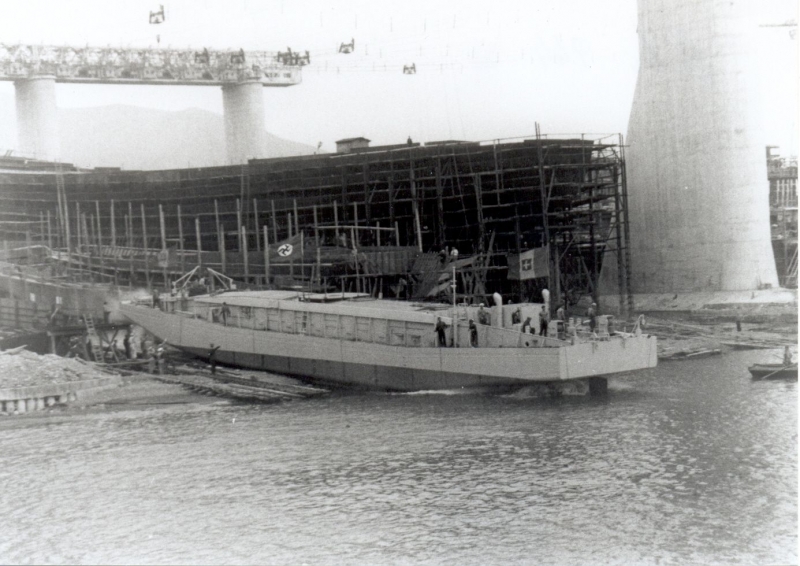
Motozaterra ML launch in 1942 credits: www.naviearmatori.net
The Italian version of the Marinefahrpram, this ship’s only puspose was the invasion of Malta, Esigenza C3. the Regia Marina was given blueprints of the the Type A in late 1941. The first order was forr 65 barges (701-765). They were called “Motozattere” (Bette MZ) in Italian shipyards of Palermo and were the first dedicated amphibious ships of that type in service with the Italian Navy. They could easily handle troops, armored vehicles and supplies, carrying for example three M13/40 medium tanks and 100 infantrymen. The Italian version however used local truck engines, OM BXD 150 hp six-cylinder (same as for the Littorina diesel trains). Their main armament was a 3 in (76 mm)/40 QF Breda gun.
Work started in March 1942 and by July all 65 MZs had been completed, ready for the Malta invasion, which was postponed on 27 July. Therefore MZs were ferrying supplies to Libya insteed as well as along the Libyan coast, providing a precious shallow water support to the Afrika Korps. Thanks to these, the Axis was able to be resupplied anywhere on the coast rather than in the few ports available, a crucial advantage.
In September 1942, the success of the formula pushed the Italian admiralty to order more, and 40 MZs numbereed 761-800 followed, with modifications such as a raised bow to improve seaworthiness and strengthened keel. They also had larger fuel tanks for better range and 100mm thick concrete armor plus a second Breda 20mm AA gun mounted amidships. The third serie (40 more MZs) ordered in June 1943 was never completed as well as 20 derivatived numbered MZ 801-820 based on the German support barge MFP-D. When the armistice came in September 1943, 95 Motozaterra has been delivered.

Author’s rendition of the MZ 711 in 1942 and 700 (above, in the 1943 modificata, AA support version).
German Siebelfähre (Siebel Catamaran barge)
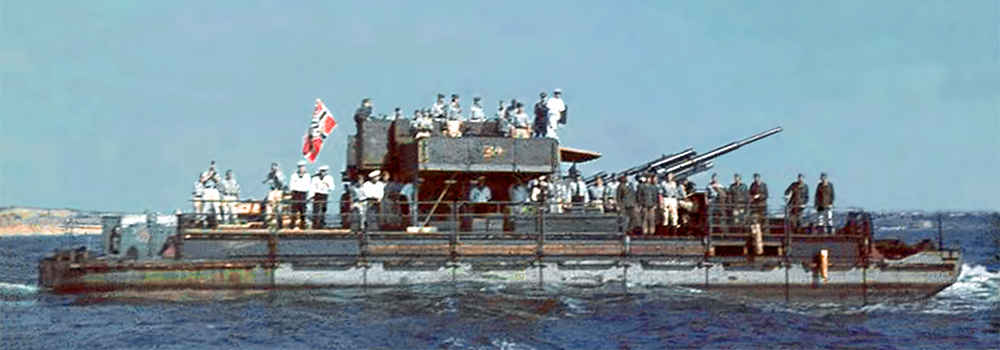
Bundesarchiv: Siebelfähre_mit 8,8 cm Flak in the Black Sea – 3D HD of the Schwere Fähre 40 ohne Deckhaus Reconstitution by Marco Gurk
The Siebel Barge were versatile shallow-draft catamaran landing crafts of the Wehrmacht, developed originally for Operation Sea Lion in 1940, and used in many theaters of operations, and for the planned invasion of malta as well.
They used a modular construction and standardized parts and engines, and could be disassembled and transported by rail anywhere. The catamaran was the Brainchild of Luftwaffe colonel Fritz Siebel which tried many solutions durnng the summer 1940, and Production eventually started in September 1940 at Antwerp. Later Siebel barges were used for many roles on lakes, rivers and shallow waters. Ten were provisioned for the landings at Malta.
Pionierlandungsboot 39, 40 & 41

Landungsboot mit Zugkraftwagen
These crafts carryed 20 long tons (20 t) of cargo, two light vehicles or 45 infantry, unloaded via clamshell doors at the bow. These were the usual German landing crafts, similar to allied models such as those built by Elco and Higgins.
The design of the Bodan shipyard in Kressbronn, Lake Constance was retained for the Pionierlandungsboot 39, entering mass production in 1940. They were ready in September 1940 for the landings in UK, later cancelled. The model 39 could be split into two longitudinal halves for rail transport. The craft was 15 m long, 4.7 m wide, propelled by two truck diesel rated for 86 hp, for 20 km/h. This model displaced 20 tons, but had a similar loading capacity.
The 40 series followed with the same engine layout and disassembly process but were larger at 19 m long, 5.93 m wide and 30 tons heavy.
The improved Pionierlandungsboot 41 was built in 1942, 19.3 m long and 5.93 m wide, 35 t, two 120 hp engines, 8 knots and 40 tons load. Contrary to the first two series which had a right opening bow, the Pilabo 41 had a bow ramp.
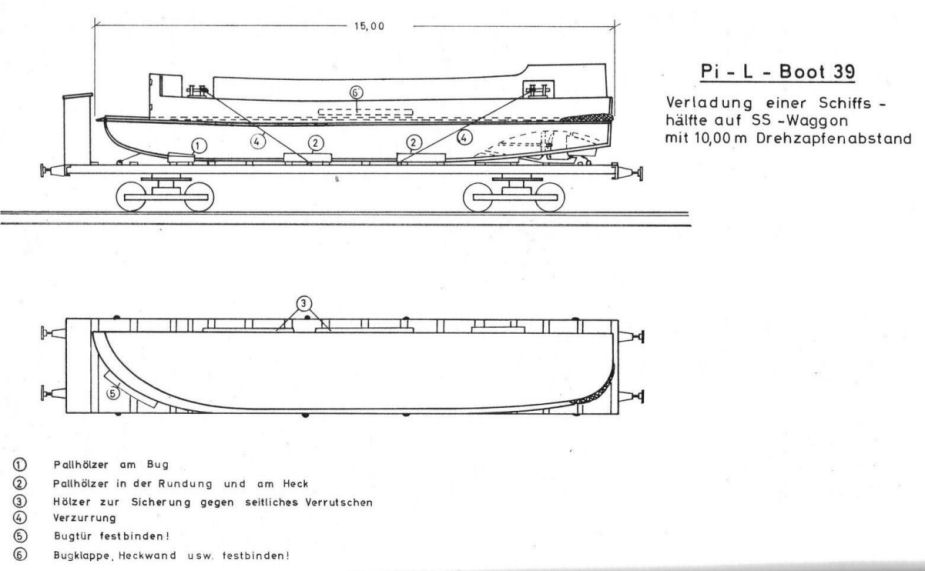
Blueprint of the Pionierlandungsboot 39 and rail carriage src:http://www.lexikon-der-wehrmacht.de/

Camouflaged Plsbt 40/5 – www.panzer-bau.de
Sturmboote
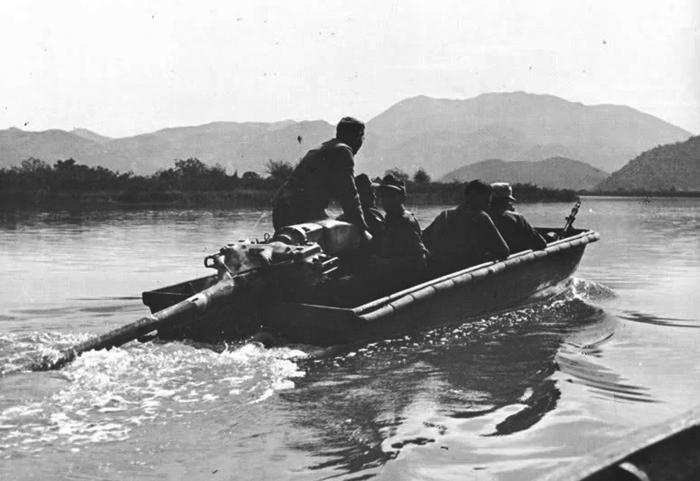
The Leichtes Sturmboot 39 was essentially a small but high-powered assault craft with an outboard motor extended from the rear of the craft. It was used for fast river and waterway crossings (30 mph) but also security and anti-partisan patrols. The Sturmboot 39 made for Operation Barbarossa could carry 6 men, one using a bow-fitted MG42. But this light craft was made of wood in foldable panels for easy transport by truck and rail and offered no protection.
Note: There will be a fully dedicated article about Italian and German landing crafts in WW2.
Read More/SRC
Tanks Encyclopedia article about the armored component of the Malta invasion
See also: https://www.timetoast.com/timelines/siege-of-malta-ww2
//comandosupremo.com/operation-herkules/
//www.timesofmalta.com/articles/view/20120819/life-features/Axis-plan-for-invasion-of-Malta.433565
//enacademic.com/dic.nsf/enwiki/292974
//www.quora.com/What-was-the-likely-result-if-the-Axis-attack-on-Malta-had-been-launched-in-July-1942
//www.tapatalk.com/groups/warships1discussionboards/why-didnt-italy-invade-malta-when-they-declared-wa-t36704-s10.html
//www.lavocedelmarinaio.com/2012/04/i-muli-del-mare/comment-page-2/
https://books.google.fr/books?id=l1e1CwAAQBAJ&pg=PA53&lpg=PA53&dq=operation+herkules&source=bl&ots=EqfVFb1SpZ&sig=ACfU3U3GGscmxoCmqBHEeASgOOVtbYmhsQ&hl=en&sa=X&ved=2ahUKEwj28LCktJ_hAhVRzhoKHUtGAsw4KBDoATAAegQICRAB#v=onepage&q=operation%20herkules&f=false
//de.wikipedia.org/wiki/Pionierlandungsboot
//forum.axishistory.com/viewtopic.php?t=55655
//www.reddit.com/r/HistoryWhatIf/comments/6dhdx0/what_if_the_axis_pushed_forward_with_operation/
//forums.armchairgeneral.com/forum/military-history-related-hobbies/alternate-timelines/120825-operation-herkules-worth-it-or-not/page3
//ipfs.io/ipfs/QmXoypizjW3WknFiJnKLwHCnL72vedxjQkDDP1mXWo6uco/wiki/Operation_Herkules.html
//www.alternatehistory.com/forum/threads/operation-herkules.99272/
//www.feldgrau.net/forum/viewtopic.php?t=4125
//www.openthesaurus.de/synonyme/Operation+Herkules
//ww2f.com/threads/operation-herkules.2621/
//www.reddit.com/r/HistoryWhatIf/comments/6dhdx0/what_if_the_axis_pushed_forward_with_operation/
//www.facebook.com/events/786867824812396/
//www.amazon.fr/OPERATION-HERKULES-Fulcrum-Alternate-History-ebook/dp/B006QOGBWK
//boardgamegeek.com/boardgame/213769/operation-hercules

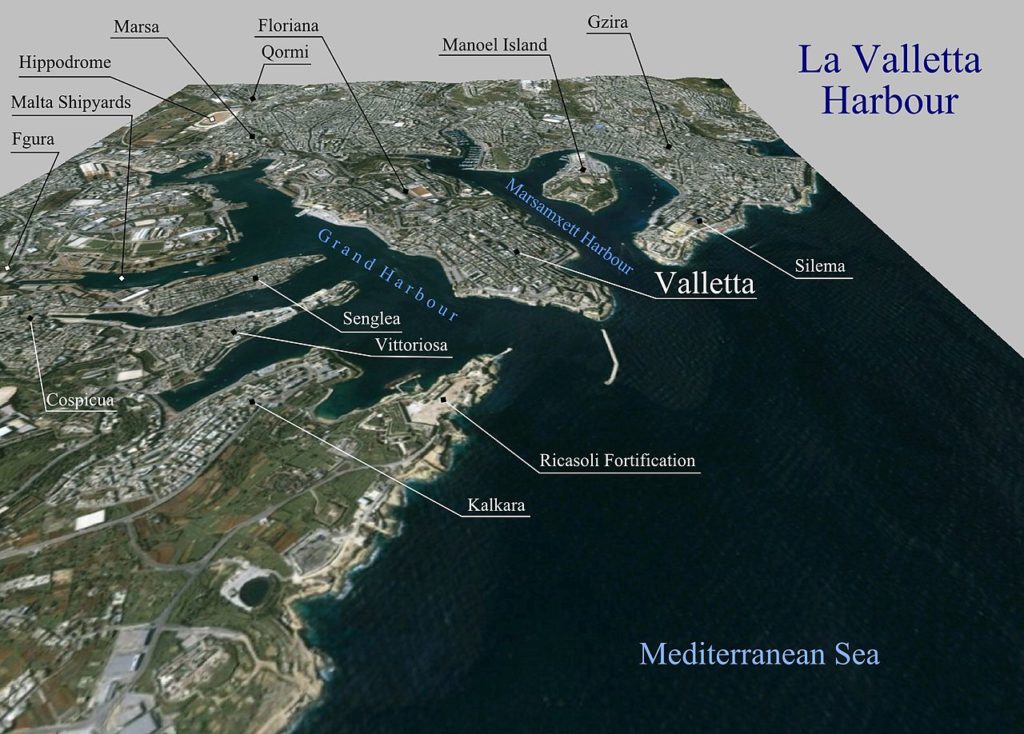
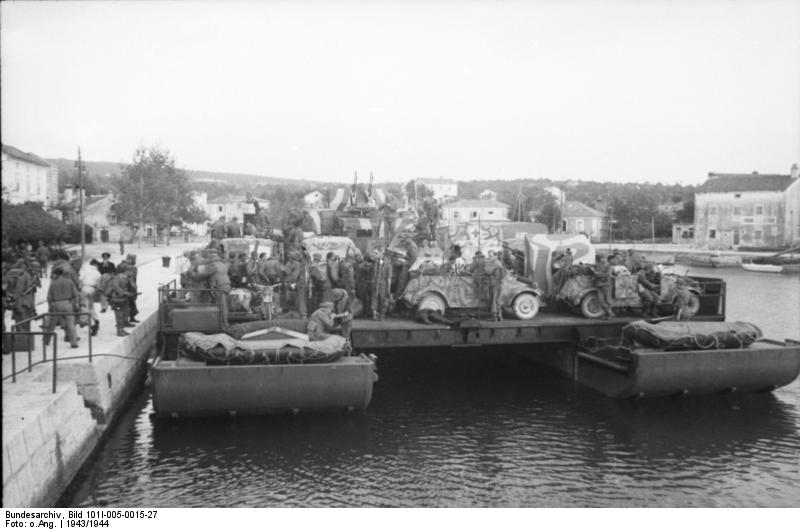
 Latest Facebook Entry -
Latest Facebook Entry -  X(Tweeter) Naval Encyclopedia's deck archive
X(Tweeter) Naval Encyclopedia's deck archive Instagram (@navalencyc)
Instagram (@navalencyc)





 French Navy
French Navy Royal Navy
Royal Navy Russian Navy
Russian Navy Armada Espanola
Armada Espanola Austrian Navy
Austrian Navy K.u.K. Kriegsmarine
K.u.K. Kriegsmarine Dansk Marine
Dansk Marine Nautiko Hellenon
Nautiko Hellenon Koninklije Marine 1870
Koninklije Marine 1870 Marinha do Brasil
Marinha do Brasil Osmanlı Donanması
Osmanlı Donanması Marina Do Peru
Marina Do Peru Marinha do Portugal
Marinha do Portugal Regia Marina 1870
Regia Marina 1870 Nihhon Kaigun 1870
Nihhon Kaigun 1870 Preußische Marine 1870
Preußische Marine 1870 Russkiy Flot 1870
Russkiy Flot 1870 Svenska marinen
Svenska marinen Søværnet
Søværnet Union Navy
Union Navy Confederate Navy
Confederate Navy Armada de Argentina
Armada de Argentina Imperial Chinese Navy
Imperial Chinese Navy Marinha do Portugal
Marinha do Portugal Mexico
Mexico Kaiserliche Marine
Kaiserliche Marine 1898 US Navy
1898 US Navy Sovietskiy Flot
Sovietskiy Flot Royal Canadian Navy
Royal Canadian Navy Royal Australian Navy
Royal Australian Navy RNZN Fleet
RNZN Fleet Chinese Navy 1937
Chinese Navy 1937 Kriegsmarine
Kriegsmarine Chilean Navy
Chilean Navy Danish Navy
Danish Navy Finnish Navy
Finnish Navy Hellenic Navy
Hellenic Navy Polish Navy
Polish Navy Romanian Navy
Romanian Navy Turkish Navy
Turkish Navy Royal Yugoslav Navy
Royal Yugoslav Navy Royal Thai Navy
Royal Thai Navy Minor Navies
Minor Navies Albania
Albania Austria
Austria Belgium
Belgium Columbia
Columbia Costa Rica
Costa Rica Cuba
Cuba Czechoslovakia
Czechoslovakia Dominican Republic
Dominican Republic Haiti
Haiti Hungary
Hungary Honduras
Honduras Estonia
Estonia Iceland
Iceland Eire
Eire Equador
Equador Iran
Iran Iraq
Iraq Latvia
Latvia Liberia
Liberia Lithuania
Lithuania Mandchukuo
Mandchukuo Morocco
Morocco Nicaragua
Nicaragua Persia
Persia San Salvador
San Salvador Sarawak
Sarawak Uruguay
Uruguay Venezuela
Venezuela Zanzibar
Zanzibar Warsaw Pact Navies
Warsaw Pact Navies Bulgaria
Bulgaria Hungary
Hungary

 Bundesmarine
Bundesmarine Dutch Navy
Dutch Navy Hellenic Navy
Hellenic Navy Marina Militare
Marina Militare Yugoslav Navy
Yugoslav Navy Chinese Navy
Chinese Navy Indian Navy
Indian Navy Indonesian Navy
Indonesian Navy JMSDF
JMSDF North Korean Navy
North Korean Navy Pakistani Navy
Pakistani Navy Philippines Navy
Philippines Navy ROKN
ROKN Rep. of Singapore Navy
Rep. of Singapore Navy Taiwanese Navy
Taiwanese Navy IDF Navy
IDF Navy Saudi Navy
Saudi Navy Royal New Zealand Navy
Royal New Zealand Navy Egyptian Navy
Egyptian Navy South African Navy
South African Navy






























 Ukrainian Navy
Ukrainian Navy dbodesign
dbodesign